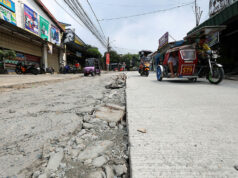BSP sees inflation at 1.9% to 2.7% in June

HEADLINE INFLATION likely settled within the 1.9% to 2.7% range in June amid upside risks from higher prices of oil and rice, the Bangko Sentral ng Pilipinas (BSP) said on Tuesday.
“Higher gasoline, diesel, and kerosene prices as well as the uptick in the price of rice due to supply bottlenecks contributed to positive price pressures during the month,” BSP Governor Benjamin E. Diokno told reporters in a Viber message, citing the June inflation estimate range of the BSP Department of Economic Research.
Global oil prices have risen in recent weeks as prospects of recovery improve based on economic data so far. The decision by major oil producers to extend record oil cuts to July from the initially planned May to June period also pushed oil prices higher.
In the Philippines, the imposition of the additional 10% tariff on imported crude oil contributed to the rise in pump prices in June. The imposition of the additional tariff, which aimed to generate funds for the government’s pandemic response, ended on June 25 with the lapse of Republic Act No. 11469 or the Bayanihan to Heal as One Act.
Headline inflation in May jumped 2.1% as food and transport prices dropped due to the lockdown. This is slower than the 2.2% in April and the 3.2% in the same month of 2019.
For the first five months of 2020, average inflation stood at 2.5%, which was within the 2-4% target set by the BSP.
Mr. Diokno said downside risks to inflation in June include the slightly lower liquefied petroleum gas (LGP) prices and electricity rates in areas serviced by Manila Electric Co. (Meralco).
Meralco earlier this month said overall rates for June dropped by P0.0216 per kilowatt-hour (kWh) to P8.7252/kWh from the P8.7468/kWh recorded in May. This means that households’ electricity consumption of 200 kWh, 300 kWh, 400 kWh, and 500 kWh could expect a bill reduction by P4, P6, P9, and P11, respectively.
“Looking ahead, the BSP will continue to monitor evolving economic and financial conditions to ensure that the monetary policy stance remains consistent with the BSP’s price stability mandate,” Mr. Diokno said.
On Monday, Mr. Diokno said the central bank sees inflation to be benign until 2022. It slightly raised its average inflation forecast for 2020 and 2021 to 2.3% and 2.6% from 2.3% and 2.5%, respectively.
This “benign inflation environment” supported the Monetary Board’s dovish stance seen through its latest delivery of another 50-basis-point (bp) cut on Thursday to help soften risks to economic growth and boost market confidence during the crisis. This lowered down reverse repurchase, lending, and deposit rates to record lows of 2.25%, 2.75%, and 1.75%, respectively.
The Philippine Statistics Authority will report the June inflation data on July 7. — Luz Wendy T. Noble



